Are you facing the steep challenge of making your sloped backyard both beautiful and functional, all while sticking to a tight budget? The task might seem daunting at first.
Sloped landscapes come with their own set of problems—erosion, poor drainage, and a lack of flat space for activities can turn what should be your personal oasis into a source of constant worry. However, it’s not all bad news.
With a bit of Sloped Backyard Ideas On A Budget, turning this challenging space into your dream garden is more than possible.
It demands creativity and a strategic plan, but the rewards—a stunning, useable outdoor area—are well worth the effort.
You don’t need a fortune to make significant changes; what’s required is a willingness to think differently and a readiness to put those plans into action.
Related:
- 25+ Best Las Vegas Backyard Landscape Ideas
- 25+ Cheap and Low-Maintenance Florida Landscape Ideas For Small Yards
- 25+ Arizona Backyard Landscaping Ideas

What can I do with a small sloped backyard?
There is no limit to what you can transform your sloped backyard into. For starters, you can always decide on having a view deck, terraces, a flower trail, wood railings or a feature path.
You can even combine two or three of these ideas if you want to go over the top. So you see, a sloped backyard is not different from leveled backyards, all you have to do is be creative.
Can you level out a sloped backyard?
Thinking of leveling a sloped backyard may have been inspired by typical allegations of sloped yards causing water runoff, erosion and difficulty in mowing and tilling the yard.
A bit of leveling the backyard will surely do the trick so yes you can level a sloped backyard but it comes with a cost and doing it on your own will prove to be tedious (and will involve a lot of sweat and labor). Not only this, but you would have to take care of your wearables while leveling the ground as well. Thereby, we will recommend you have a comfortable gardening kneeler and seat to do the chore easily. Forget about getting stains on your clothes.
How much does it cost to level a sloped backyard?
So yes, you can level your sloped backyard but at what cost? Landscapers and property brokers all agree that leveling a sloped backyard could cost a homeowner $2 to $20 per cubic yard of dirt.
To complete the whole thing and of course depending on the size of the entire backyard, you will get to spend an average of $1900 to complete the whole thing with hired laborers and $1200 if you do it on your own.
While it has a unique way to emphasize a structure’s beauty through multileveled elevations, sloped backyards are particularly challenging as it is vulnerable to soil erosion and it requires more regular maintenance. Nonetheless, these should not limit you from notching your sloped backyard up.
If you are looking for budget ideas on what to for a slope backyard, here are some styles and arrangements to consider.
23 Sloped backyard ideas on a budget
As have been mentioned, there is no limit to what you can do with your sloped backyard but it would be best to narrow down the ideas with the most common backyard designs when it comes to sloped and uneven yards.

1. Unique Water feature with watering cans

Having a water feature in the backyard is somewhat staple because it balances the features of the sloped terrain. It can also serve as the focal point of landscaping. But it does not need to be a fountain or a pool. You can also make a descending water flow out of water cans placed in each stair level.
2. Tumbled Paver Patio

You can take your beautiful garden view literally to the next level by setting up a backyard patio which overlooks it. Along the stairs, install planters made with concrete pavers.
Let the flooring of the patio and the stairs be made of concrete pavers too for a more cohesive design. The dark green patch evens the color of the entire arrangement making it a relaxing spot for friends and family.
3. Stonework landscaping

What better complements a sloped backyard than stone, right? From the walk path in the flat level, to the borders for the planters up to the stairs leading to a backyard fire pit, a barbeque area or an extended deck or a pergola, adoring a sloped backyard with beautiful stonework gives it a very organic tone.
4-7. Stone stairs on a green patch



You can drench the whole sloped backyard with grass turf, but it is important that you add other dynamics to the landscape.
Flowering plants are of course, musts, but another way to make the sloped backyard even more interesting is incorporating stone stairs in the middle of a green patch like this one.

Source: 7
8. Serene backyard seating on a slope

Having sheltered seating in a sloped terrain in the backyard evokes the vintage vibe of an old English manor in a countryside. You can use the old brick structure of the garden and raise it a bit to serve as the seat’s headrest.
Use repurposed wood to make the benches. For the flooring, you can use light-colored pea gravel for accent
9. Slabs of natural stone and steps

The combination of lush greeneries including low-growing shrubs and a lot of seasonal flowering plants contrasted on slabs of natural stone to border the planters and to serve as stairs is one cohesive look for a sloped backyard garden.
Incorporate solar garden lights in the planters and some rattan seating in the patio. If you set the tone right for this style, you would not be needing other elaborate accent pieces for your backyard.
10. Polished wood: Steps, walls with sleepers

Nothing beats the elegance of sealed, polished wood. Hardwood is particularly beautiful and if you have reclaimed ones or those that you can repurpose, you can polish it to serve as a stairway leading to a firepit, a deck or a backyard garden.
Going towards a box-type design for polished wood also serves as a multifunctional stair as the flat surface can be turned into wooden benches
11. Small backyard

12. Slide on hill

13. Build gravel stairs on a hillside

We are accustomed with wood and natural stone slabs. We only find gravel in the flooring of the leveled part of a sloped backyard. A budget idea for a sloped backyard stair would be boxed gravel. You can enclose fine gravel in repurposed wood boxes. It can lead to a backyard seating with paver flooring and a barbeque grill and garden lights.
14. Nice slope with abundant boxes

Source: mysquarefootgarden, brews-bros
If you have a spacious sloped backyard, you can make a Tuscan vineyard or garden out of it. You can do this by putting up large, raised garden beds across the green backyard turf. You can decide to plant one row with the same plant or veggies, or you can diversify each box with different types of plants.
15. Raised beds

16-19. Tiered
If you are thinking Beverly Hills and Mediterranean homes, tier designs for sloped backyards would make the home classy yet commanding at the same time. And if you use the right materials that will complement your home’s overall design, you can avoid erosion and water runoff due to the uneven slopes.
On top of that, you can always play with layers with plants and other elements. Take a look at these designs from Bob Vila, The Spruce.




20-23. Staircase
The most common design of all would be stairs of all forms and using various materials. There is something about stairs that leaves a dramatic impact to the scenic angle it will lead to be it the back garden, a pergola to dine in, a fire pit for smores and merrymaking and many more. Look at how bewitching these sloped backyard designs are from Houzz, and Villa Landscapes.




24-27. Water features
A water feature in the backyard is always a good idea and would be very scenic if the design is executed well.
Aside from giving the home a natural cooling system, the wood, stone or concrete elements along a sloped backyard will make the space more enigmatic. For ideas on how to incorporate water features in a sloped backyard, look at these designs from Demotivateur, Eat Anchor Hitch, Bob Vila and Pinterest.




28-30. Retaining walls
To make a clave-like space where you could spend time in the backyard, retaining walls are a thing of beauty specially for sloped backyards.
You could always adorn it with flowering plants, palm trees and enclose the walls with wood, cobblestone or concrete for a cinematic effect like these ones from Houzz.



31-34. Decks and rails
Decks and rails are also default ideas when it comes to sloped backyards. Like tiers, stairs and retaining walls, decks make the ambience of the backyard more dramatic.
They make a good venue for family soirees and with light work, woodwork, plants, stone elements, and the right theme, it will be a sweet spot for all family gatherings. Just look at these designs from The Home Depot, BHG and Archadeck West Country.




35-50. More sloped backyard ideas










Natural steps for a sloped backyard

This idea is something that every garden enthusiast would love. For the steps, you can use red soil or gravel. Add small stone tiles in between to serve as a pathway.
On the side, you can arrange wood box planters to serve as rails and an organic patch too instead or raised garden beds. Blue stones as the stair wall is also a fine touch.





Tiered Garden Beds with Recycled Wood

Gravel Pathways Downhill
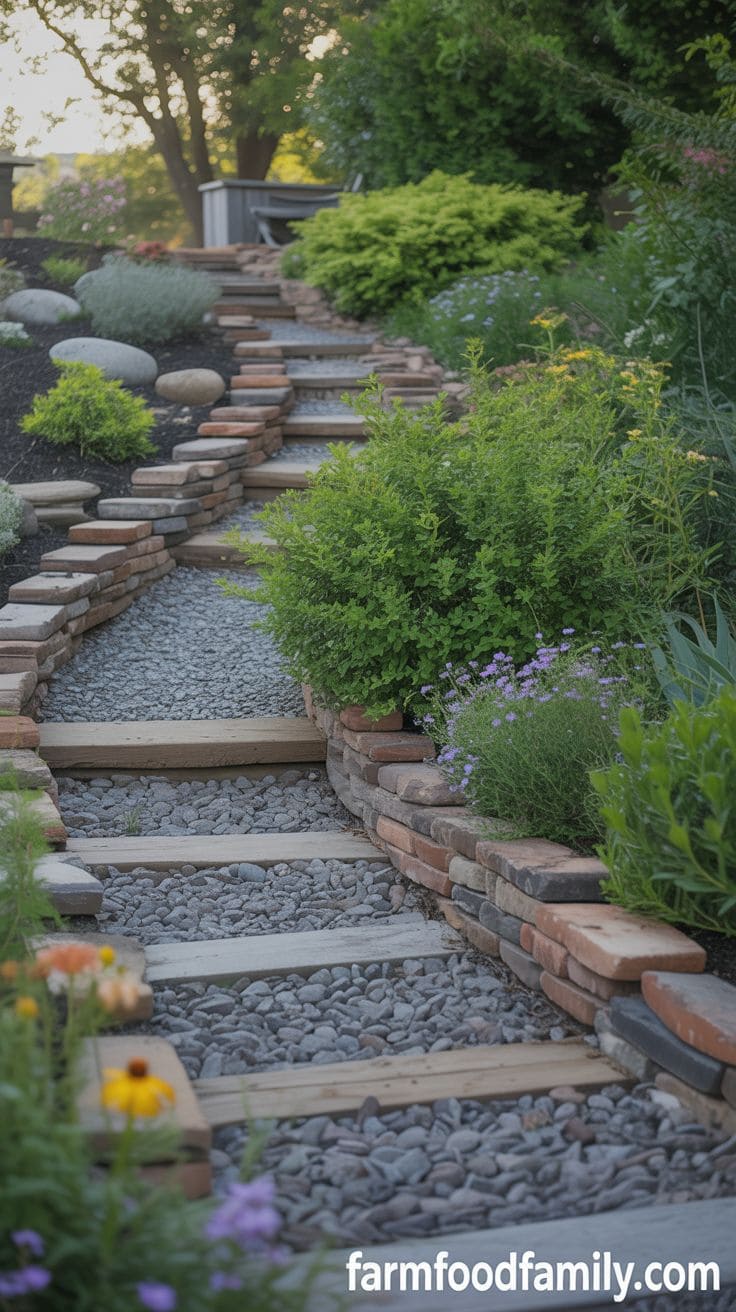
DIY Stone Retaining Wall
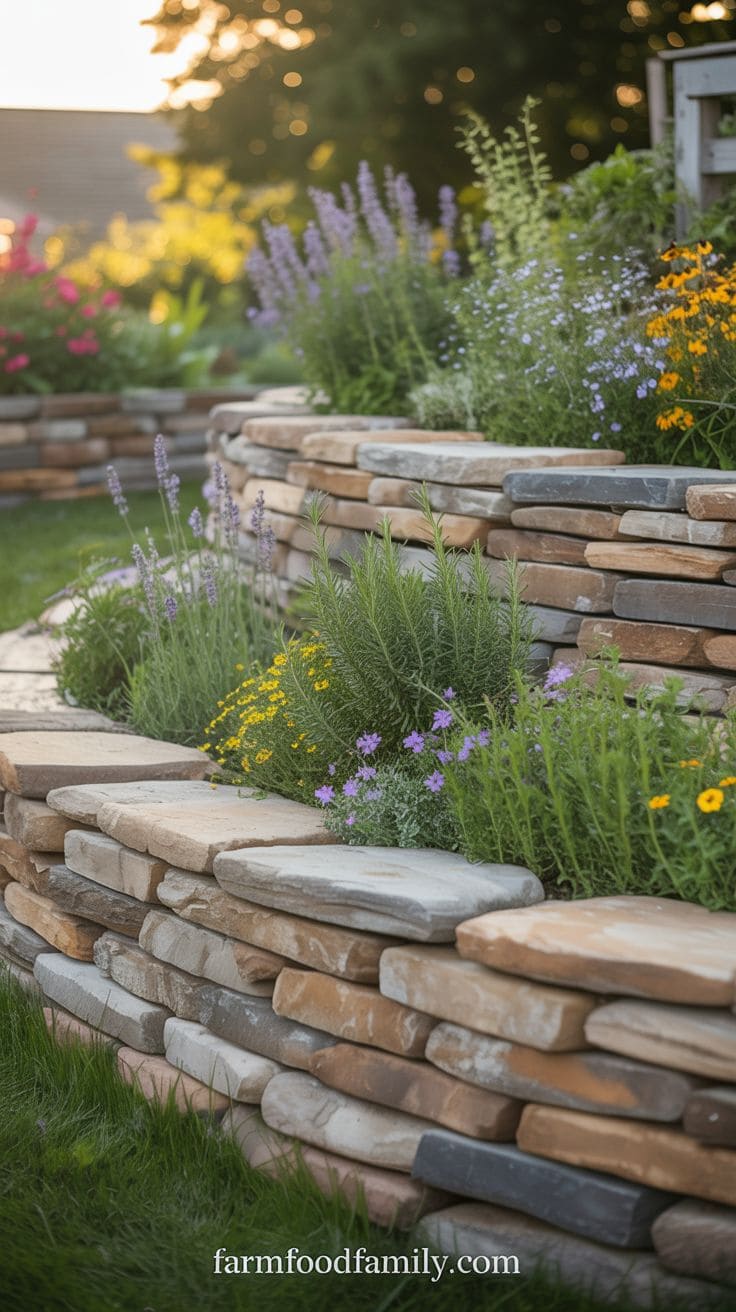
Groundcover Plants Instead of Grass
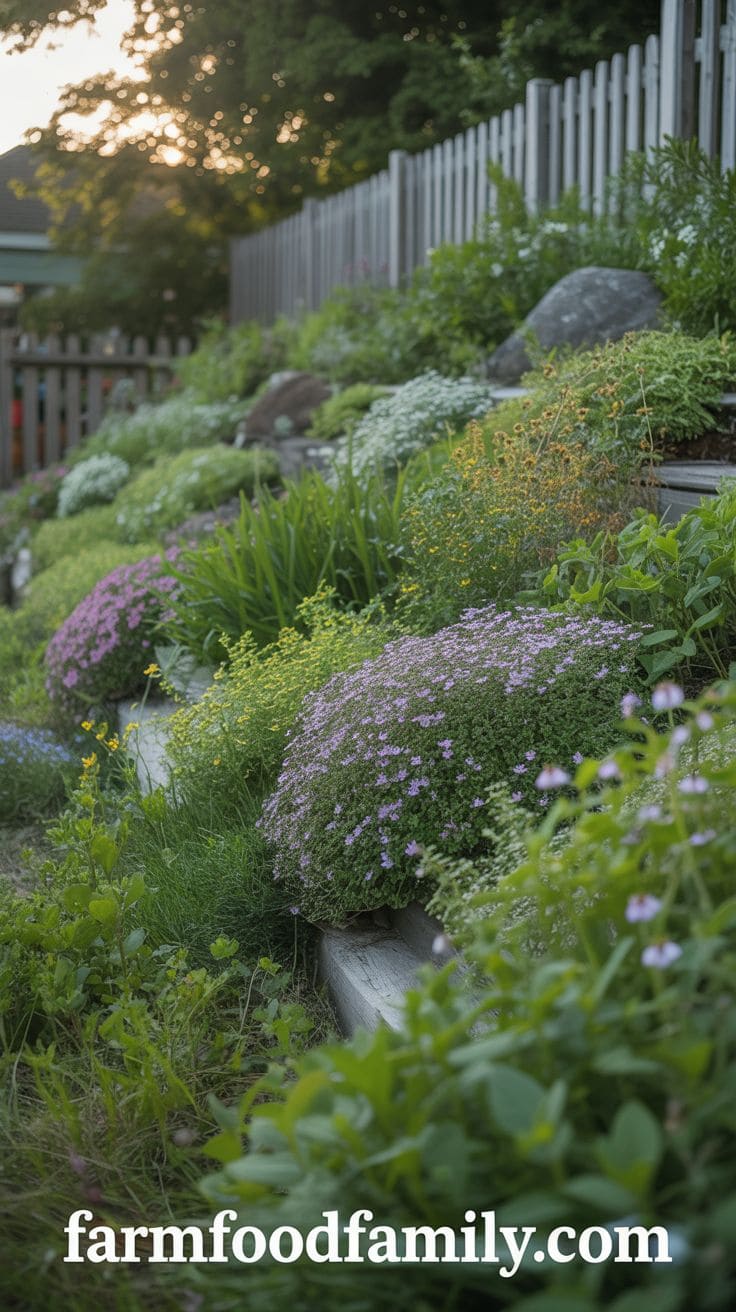
Upcycled Wooden Steps

Flower Bed Terraces
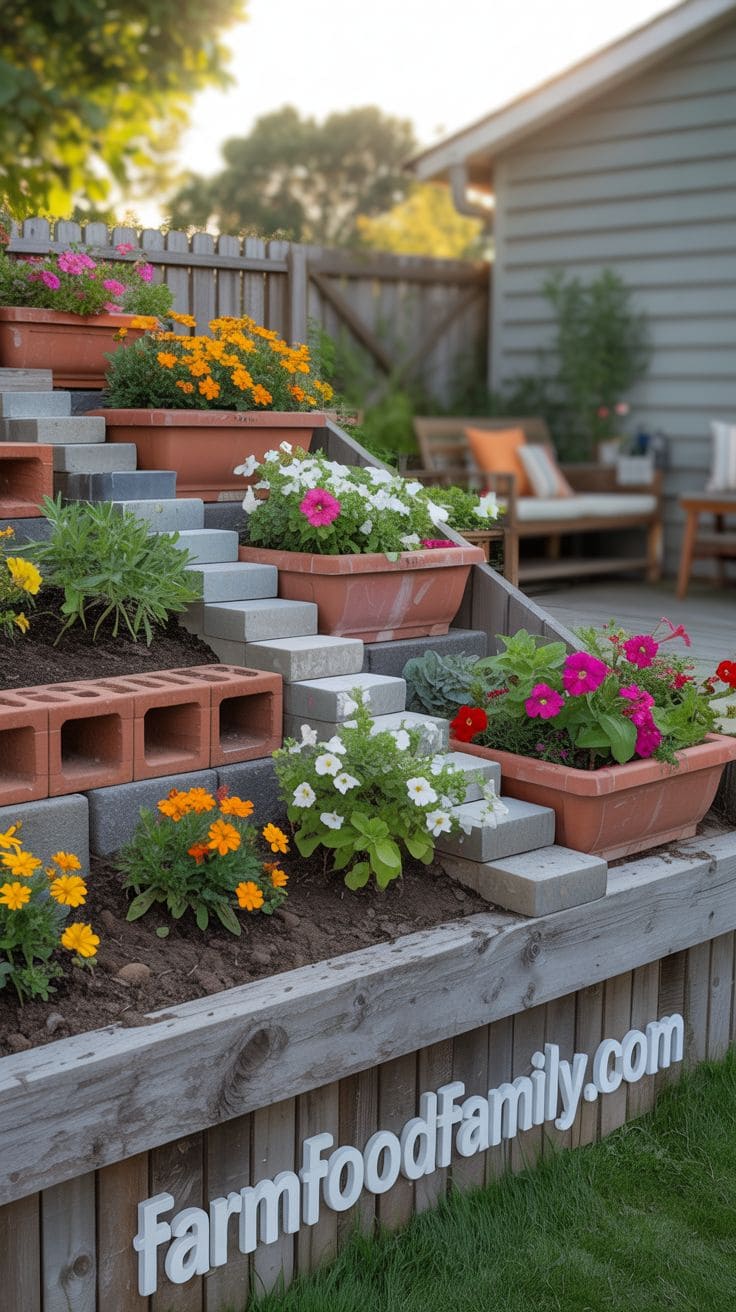
Hillside Rock Garden
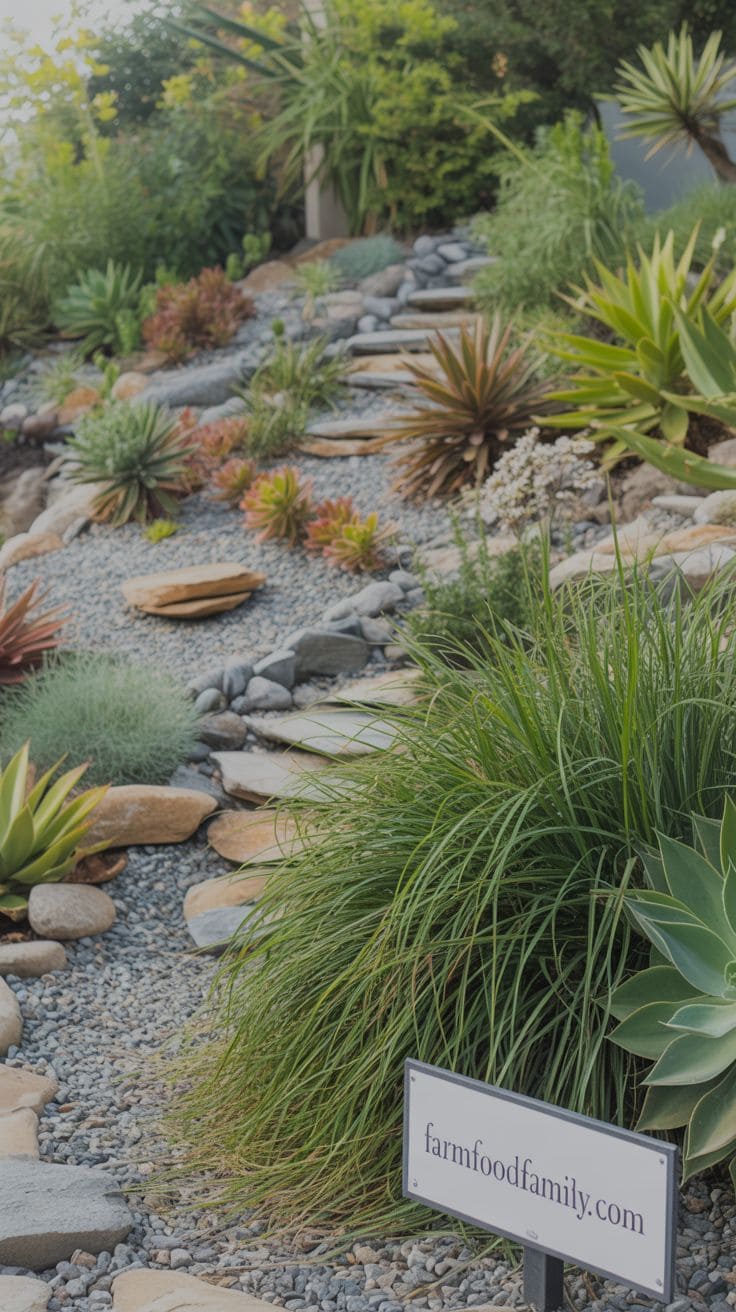
Vertical Pallet Garden
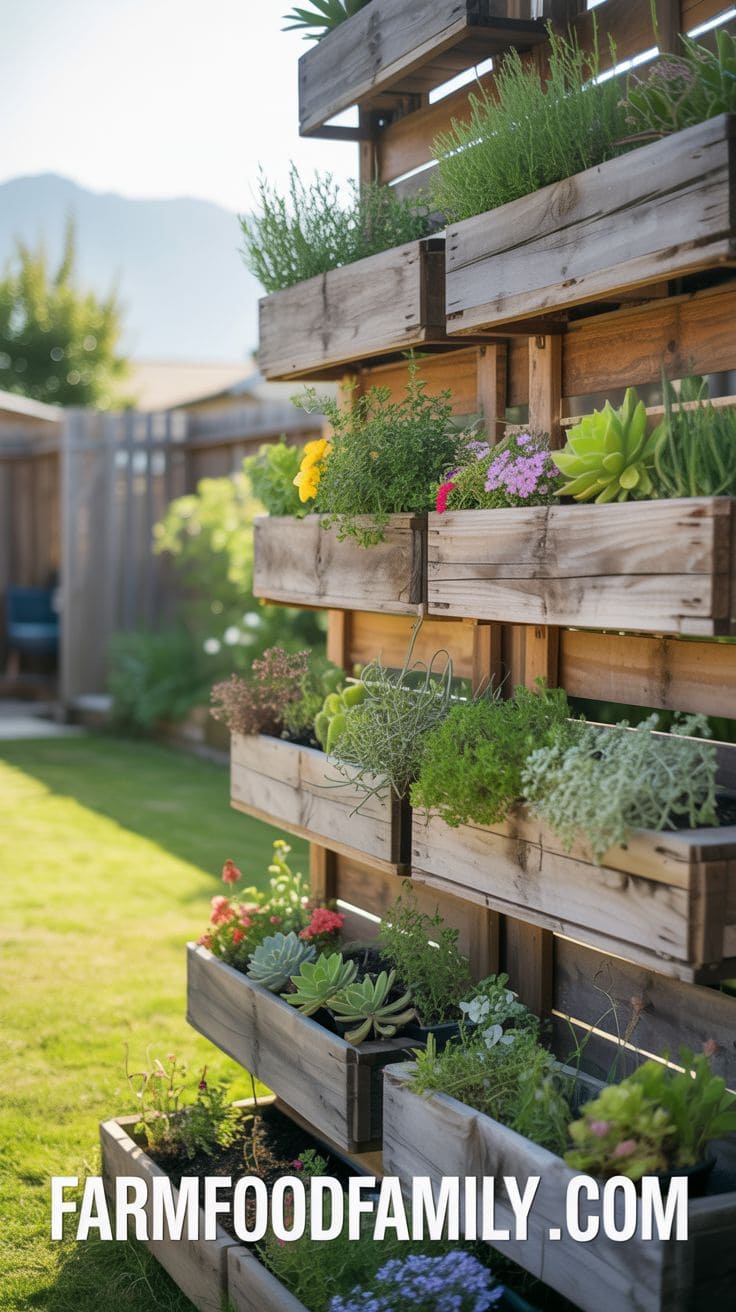
Budget-Friendly Mulch Landscaping
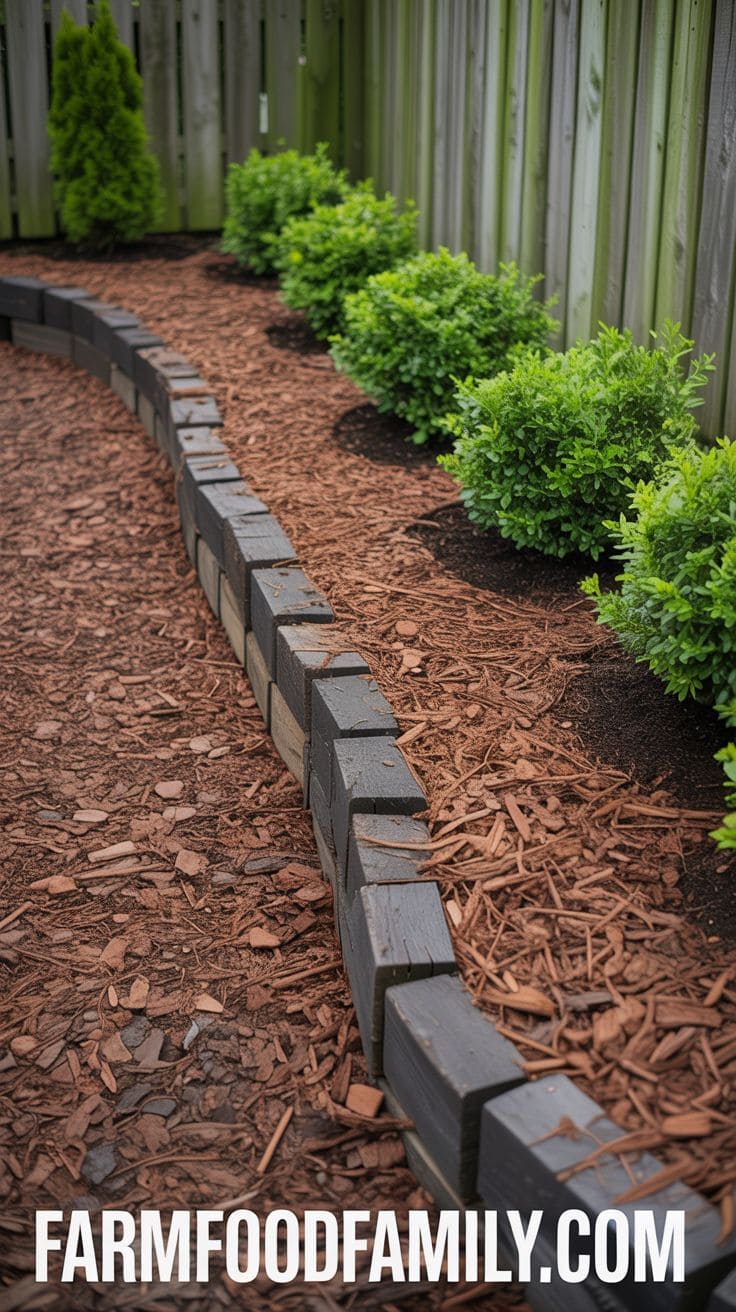
Wildflower Meadow Slope

Upcycled Brick Edging
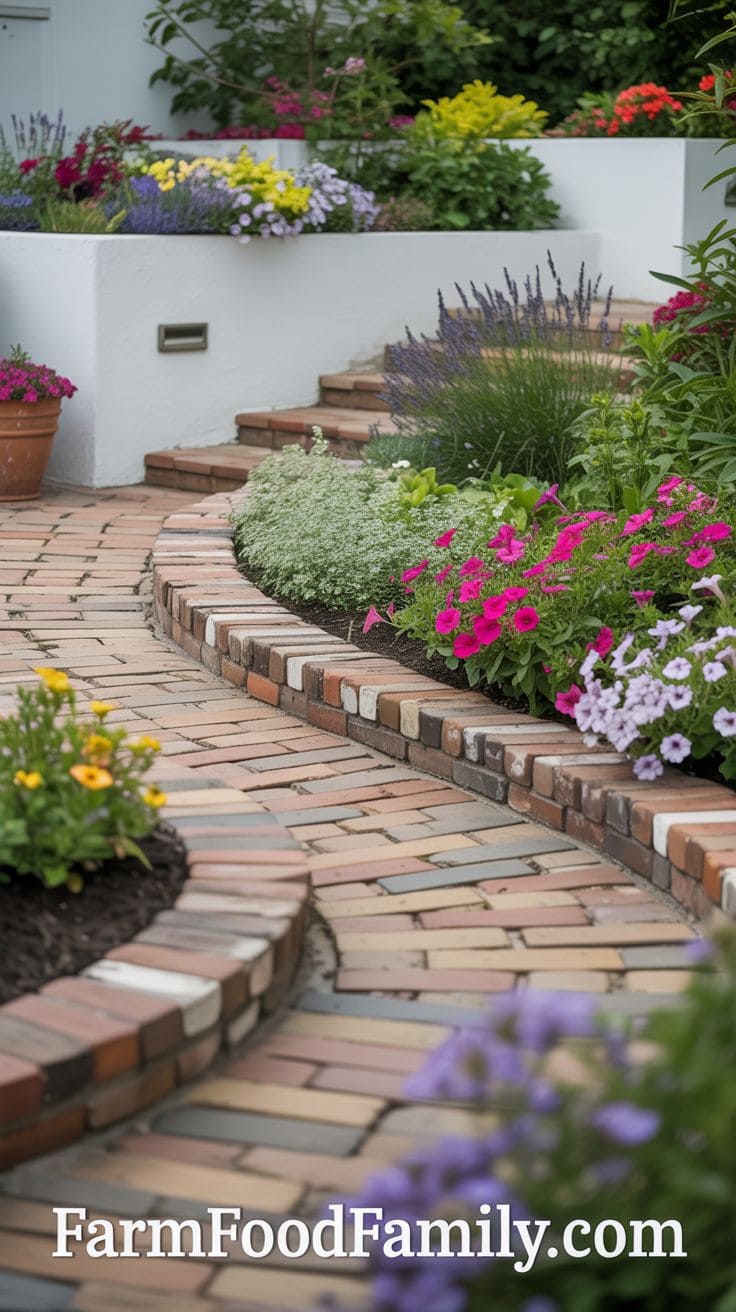
Hillside Waterfall Feature with Recycled Materials

Climbing Vines with Trellises
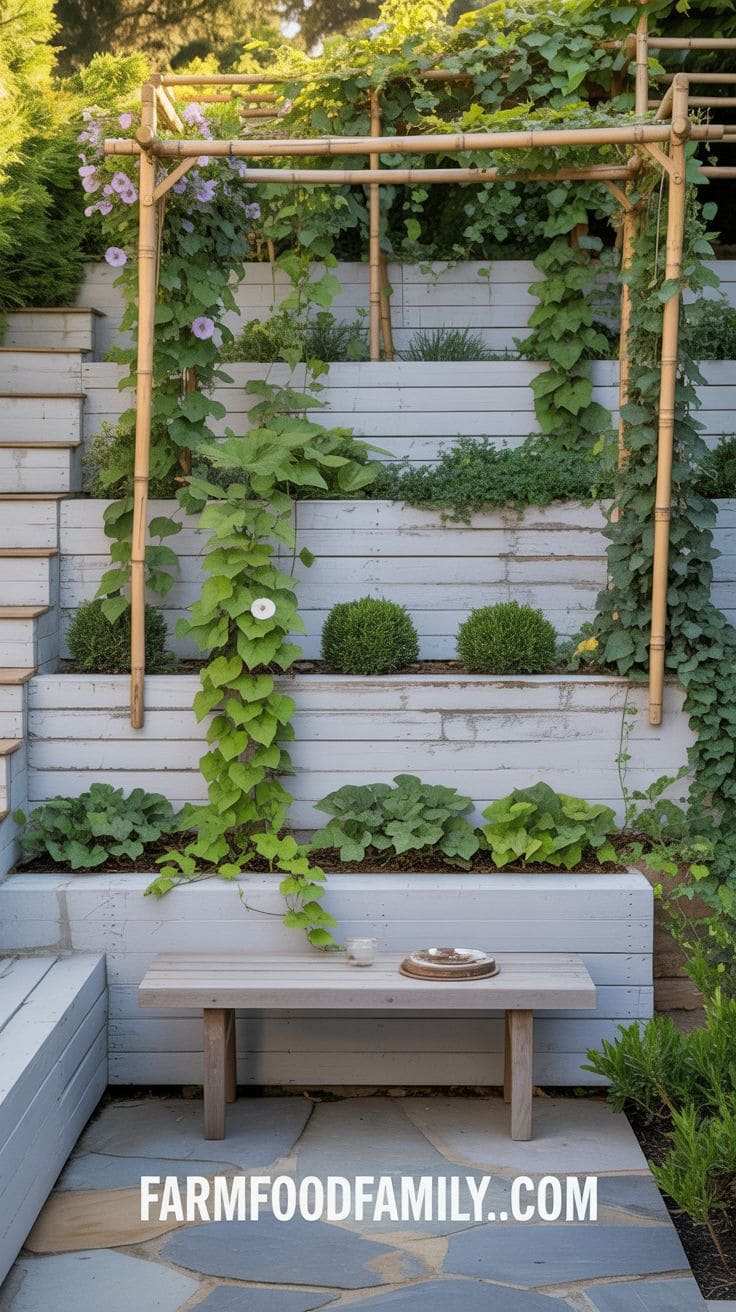
Raised Veggie Beds on a Slope
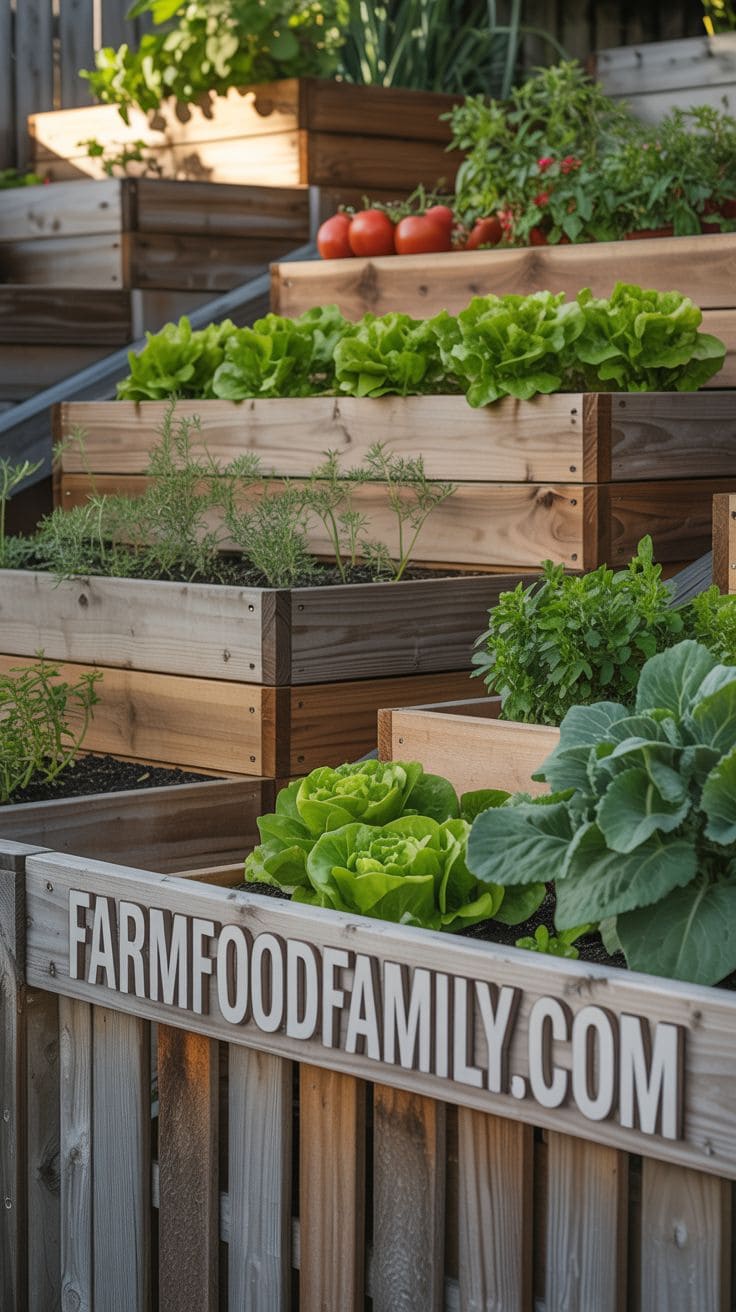
Log Retaining Borders
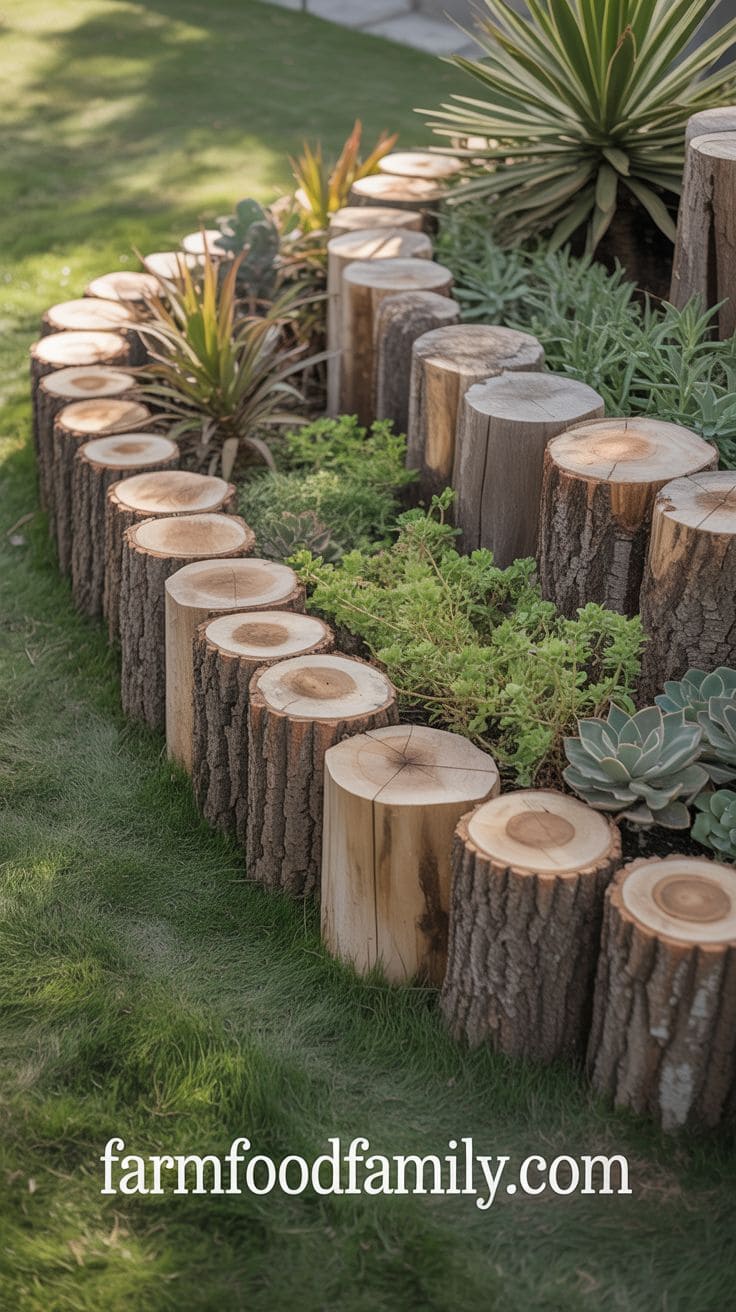
Hillside Fire Pit Area
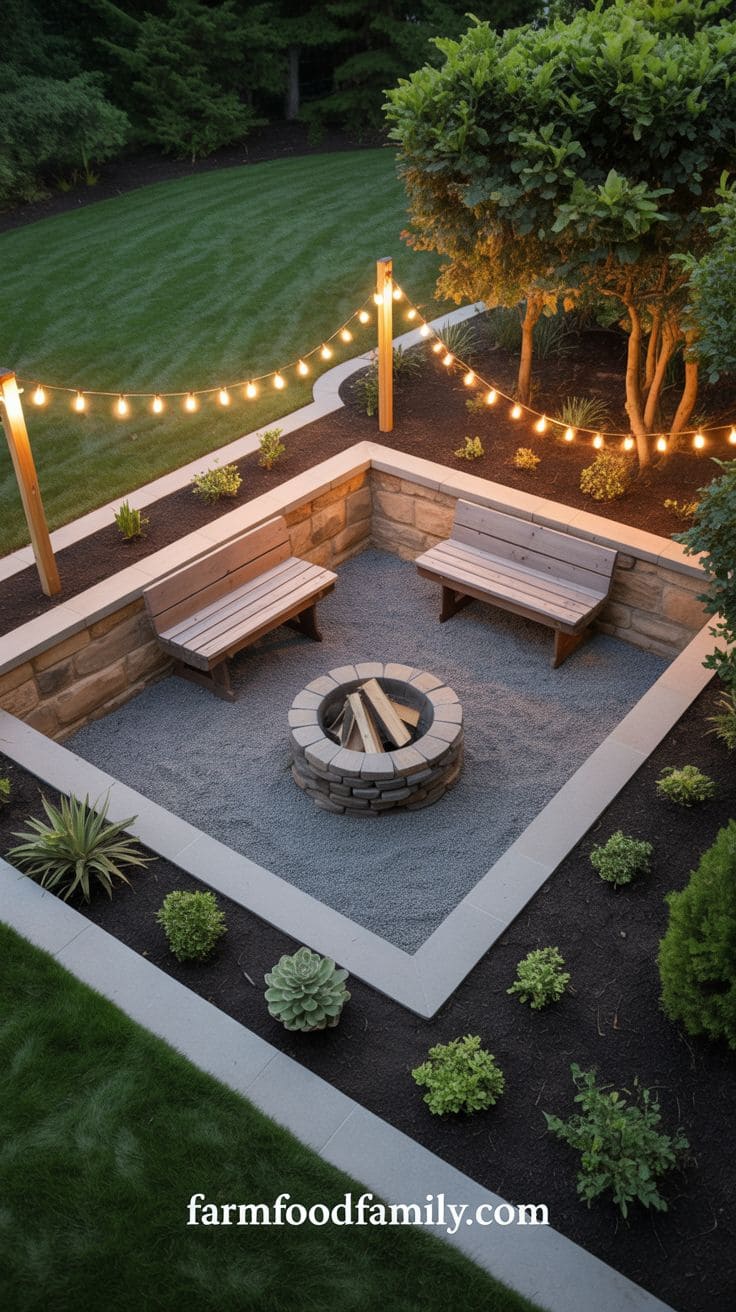
Recycled Concrete “Urbanite” Walls

Native Plant Layers
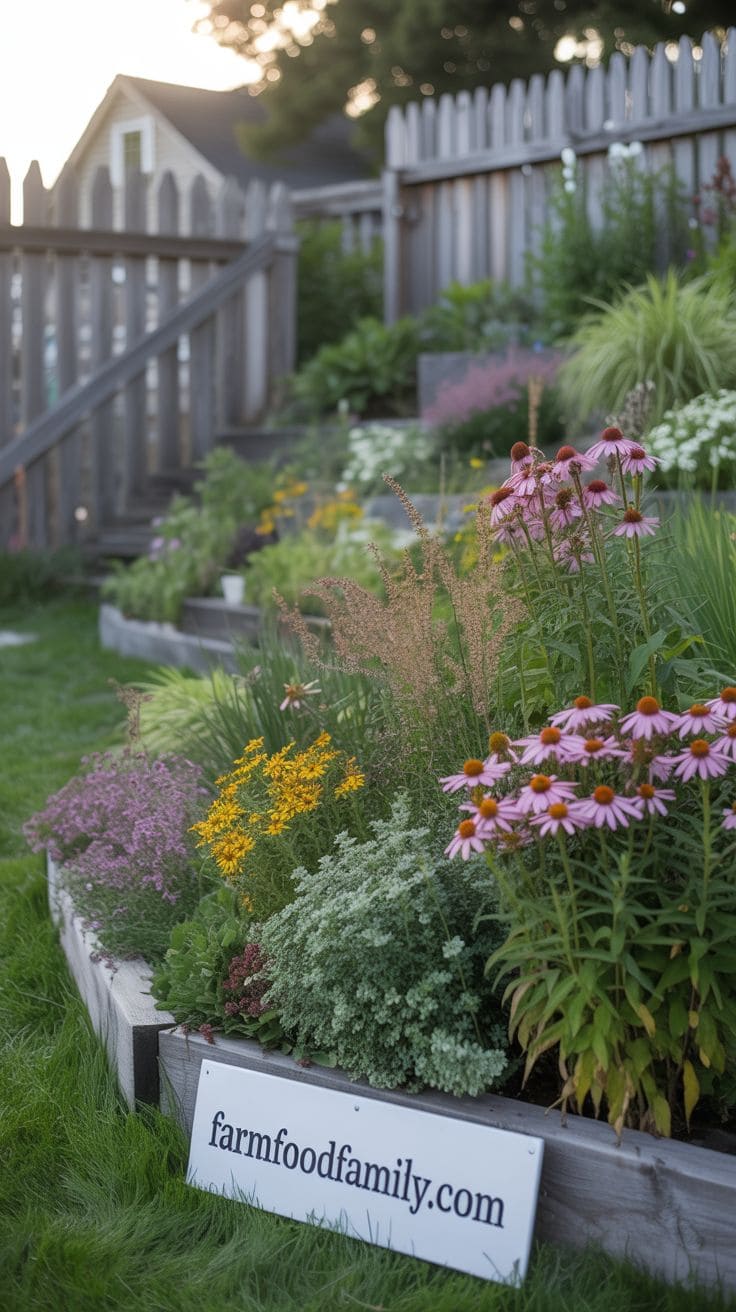
DIY Stone Stairway
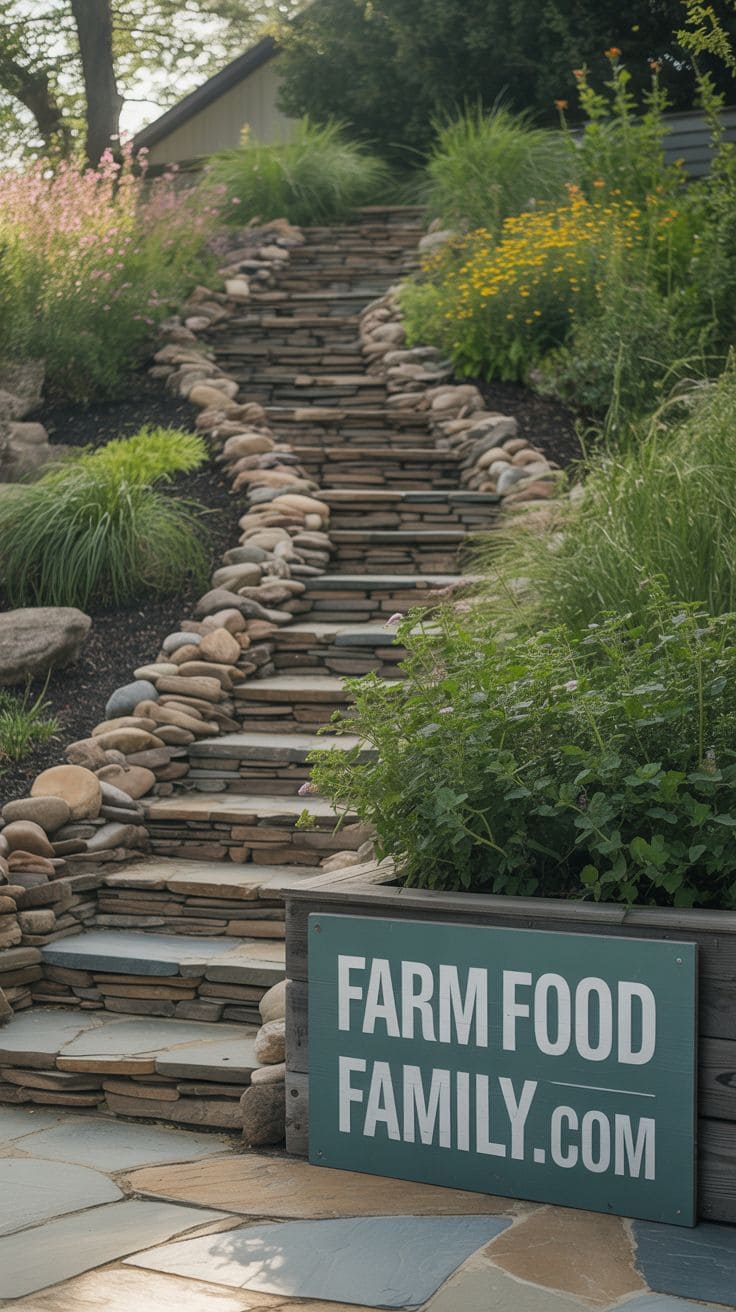
Rain Garden at the Bottom
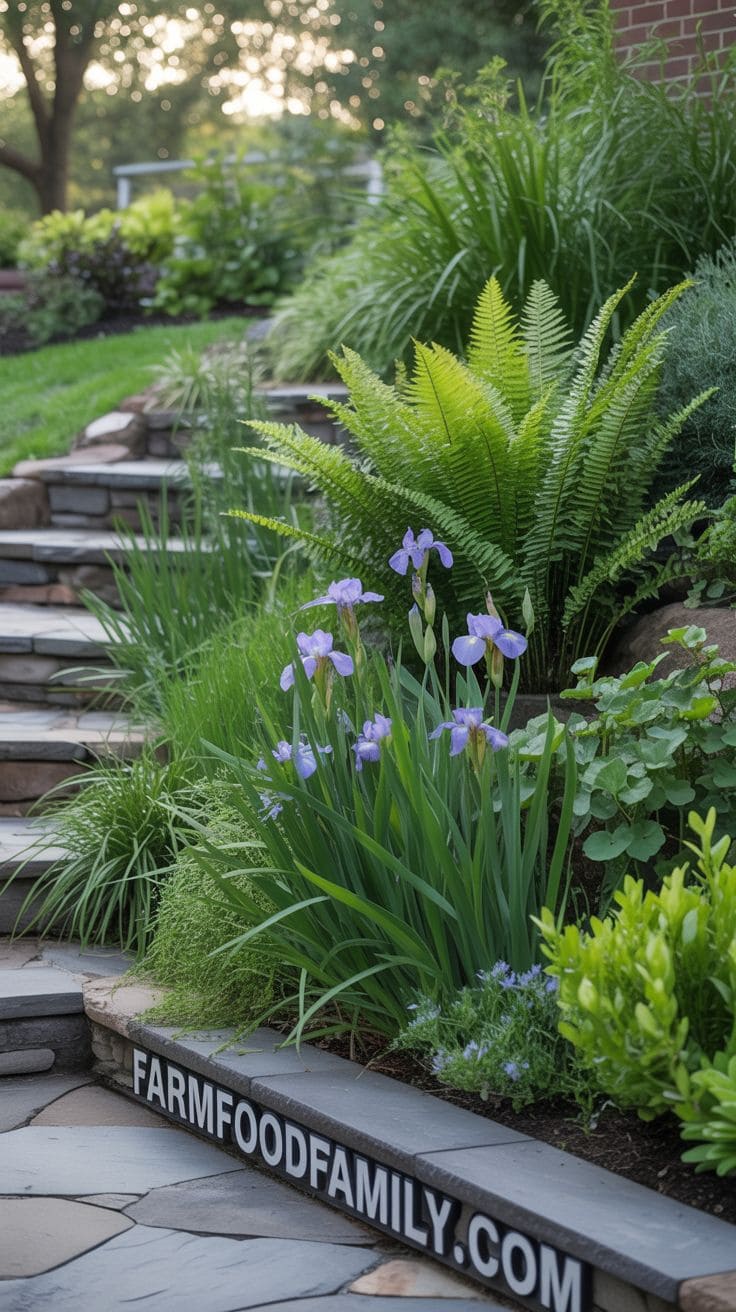
Terracotta Pot Displays
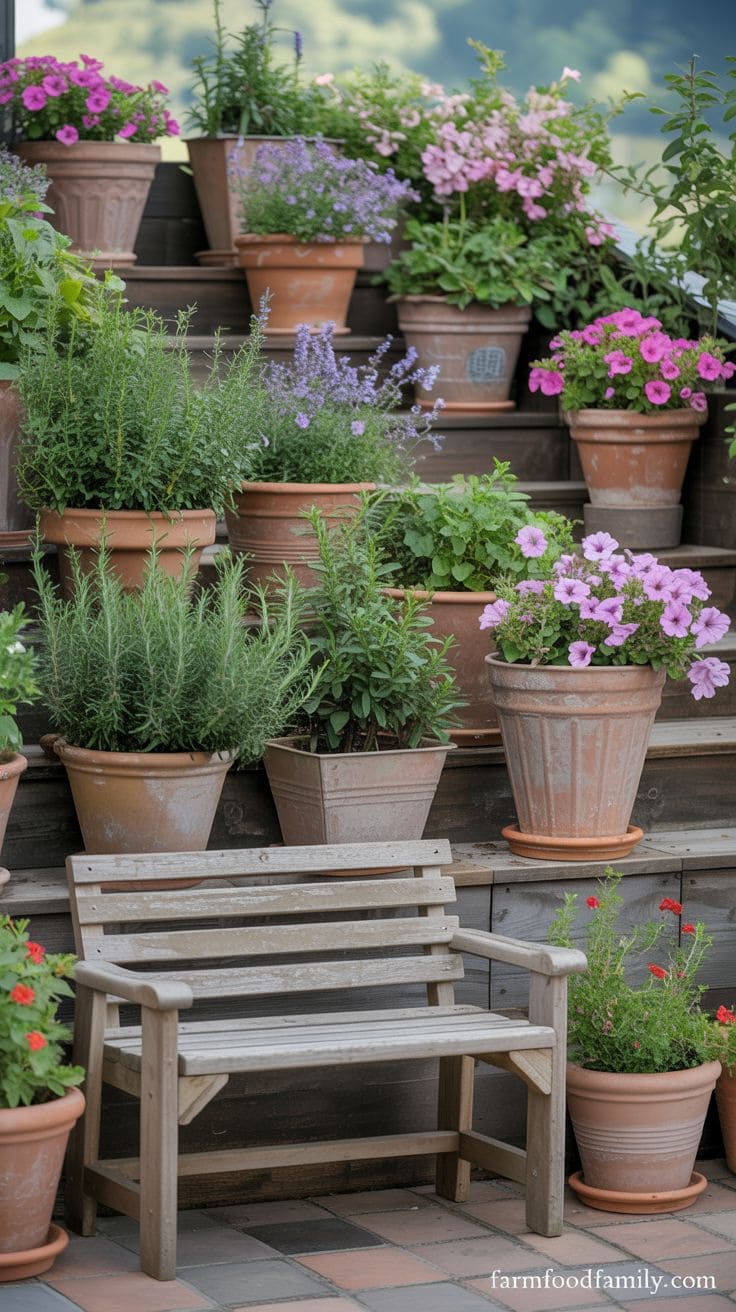
Lighting with Solar Stakes

Sloped Seating Nook
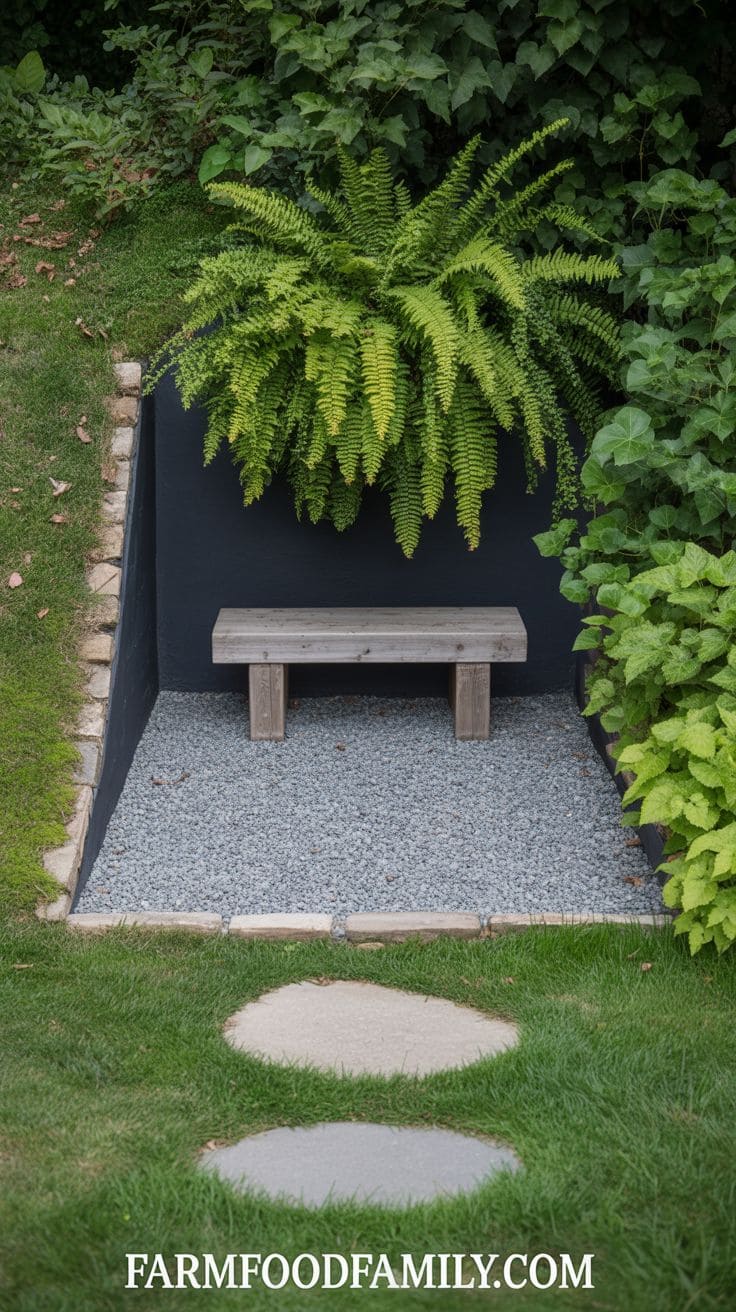
Mosaic Stepping Stones
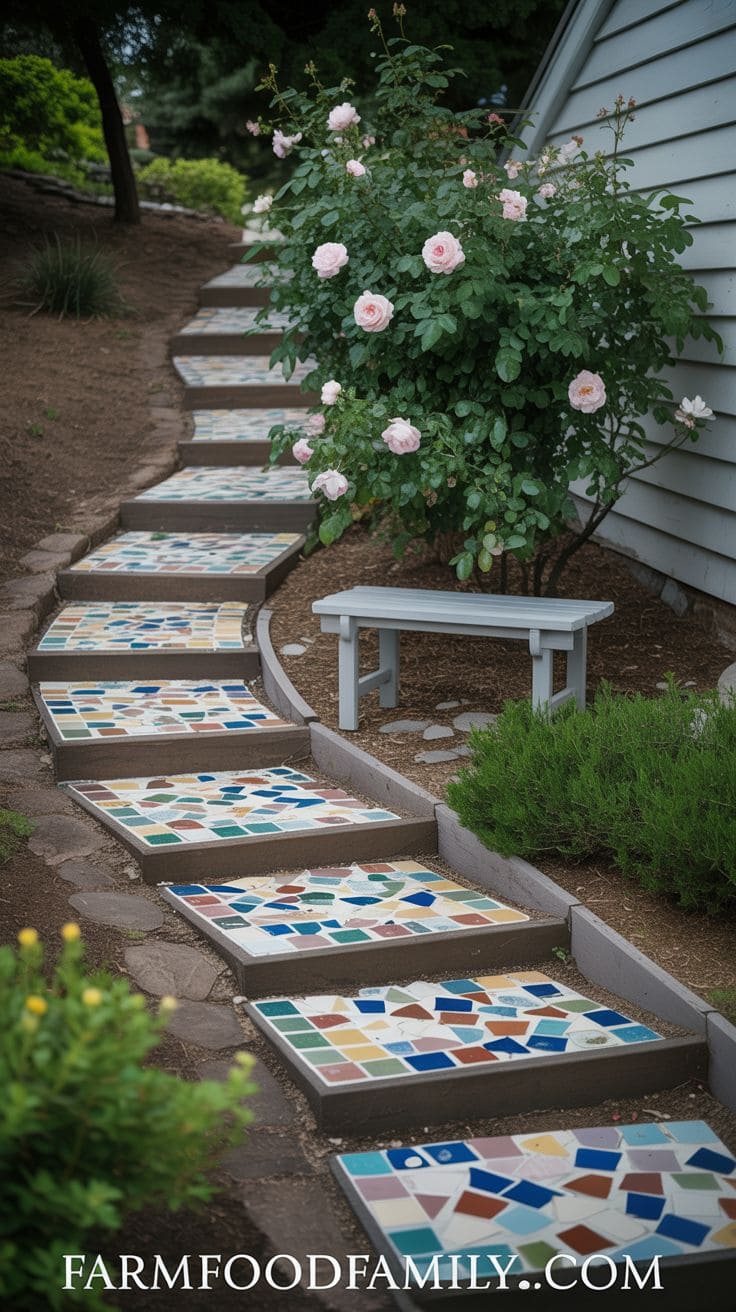
Evergreen Shrub Borders
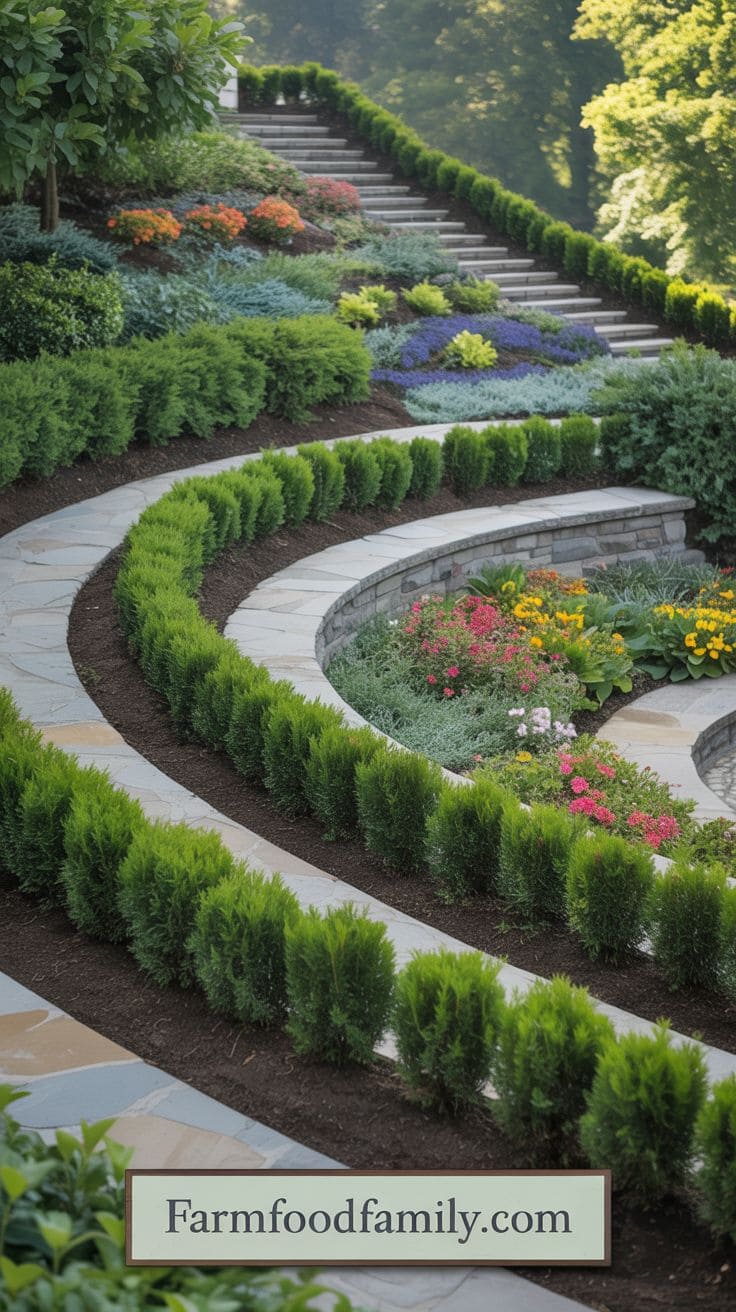










































































Conclusion
To conclude, slope backyards could be a beautiful home project if you just sit down and see their potential.
Instead of spending a lot of money leveling the slopes of your yard, why not make the most out of what you got and just invest in what will make it an asset for your entire home. And these ideas, as you now know, need not be expensive.








